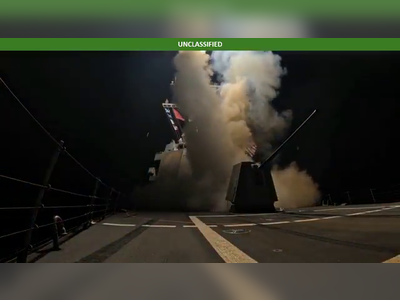
Coroner Rules Use of Force Against IRA Members in 1992 Ambush 'Not Justified'
An inquest into the shooting of four Provisional IRA members by British soldiers in Northern Ireland concludes that lethal force was unwarranted.
A ruling by Northern Ireland’s presiding coroner, Mr Justice Michael Humphreys, concluded that members of a British military unit, specifically the Special Air Service (SAS), did not have justification for the lethal force used against four Provisional IRA members during an ambush in Co Tyrone in 1992. The incident occurred on February 16, 1992, shortly after the IRA members had attacked the Coalisland Royal Ulster Constabulary (RUC) station.
The inquest, which began in 2023, found that the soldiers fired approximately 570 rounds into the ambush site as the men arrived in a stolen lorry.
The coroner stated there was no reasonable belief on the part of the soldiers that it was necessary to use lethal force to prevent loss of life.
The four deceased IRA members were identified as Kevin Barry O'Donnell, Sean O'Farrell, Peter Clancy, and Daniel Vincent, aged 21, 23, 19, and 20 respectively.
In his findings, Mr Justice Humphreys rejected the soldiers’ accounts which claimed that the use of deadly force was necessary for self-protection.
According to the coroner, the evidence showed that the IRA unit did not pose a threat when the decision to open fire was made.
Notably, he criticized the lack of attempts by the soldiers to arrest the IRA members, even when they were incapacitated.
Mr Justice Humphreys described the operation as poorly planned, stating that it did not pursue strategies to minimize the need for lethal force.
He specifically refuted claims made by the soldiers that gunfire had been exchanged, asserting these statements were clearly untrue.
He pointed out that post-event reports prepared by the SAS and the police perpetuated false narratives about an exchange of fire, which were disseminated to government ministers and the media.
The coroner highlighted systemic failures in the investigative process and noted that the Ministry of Defence characterized the incident as "an excellent Security Forces success." During the inquest, he documented that the agency's releases misrepresented the situation, reporting a firefight that did not occur.
Evidence clarified that the IRA members were attempting to flee when they were shot; O'Donnell was shot in the back while trying to escape and subsequently while incapacitated.
Similarly, the other members were also shot while in fleeing or incapacitated positions, with Mr O'Farrell being shot both in the back while running and then again while incapacitated on the ground.
The inquest findings have again drawn attention to the contentious history surrounding security operations during the Troubles in Northern Ireland, alongside ongoing discussions of accountability and the legacy of such incidents.
The inquest, which began in 2023, found that the soldiers fired approximately 570 rounds into the ambush site as the men arrived in a stolen lorry.
The coroner stated there was no reasonable belief on the part of the soldiers that it was necessary to use lethal force to prevent loss of life.
The four deceased IRA members were identified as Kevin Barry O'Donnell, Sean O'Farrell, Peter Clancy, and Daniel Vincent, aged 21, 23, 19, and 20 respectively.
In his findings, Mr Justice Humphreys rejected the soldiers’ accounts which claimed that the use of deadly force was necessary for self-protection.
According to the coroner, the evidence showed that the IRA unit did not pose a threat when the decision to open fire was made.
Notably, he criticized the lack of attempts by the soldiers to arrest the IRA members, even when they were incapacitated.
Mr Justice Humphreys described the operation as poorly planned, stating that it did not pursue strategies to minimize the need for lethal force.
He specifically refuted claims made by the soldiers that gunfire had been exchanged, asserting these statements were clearly untrue.
He pointed out that post-event reports prepared by the SAS and the police perpetuated false narratives about an exchange of fire, which were disseminated to government ministers and the media.
The coroner highlighted systemic failures in the investigative process and noted that the Ministry of Defence characterized the incident as "an excellent Security Forces success." During the inquest, he documented that the agency's releases misrepresented the situation, reporting a firefight that did not occur.
Evidence clarified that the IRA members were attempting to flee when they were shot; O'Donnell was shot in the back while trying to escape and subsequently while incapacitated.
Similarly, the other members were also shot while in fleeing or incapacitated positions, with Mr O'Farrell being shot both in the back while running and then again while incapacitated on the ground.
The inquest findings have again drawn attention to the contentious history surrounding security operations during the Troubles in Northern Ireland, alongside ongoing discussions of accountability and the legacy of such incidents.











